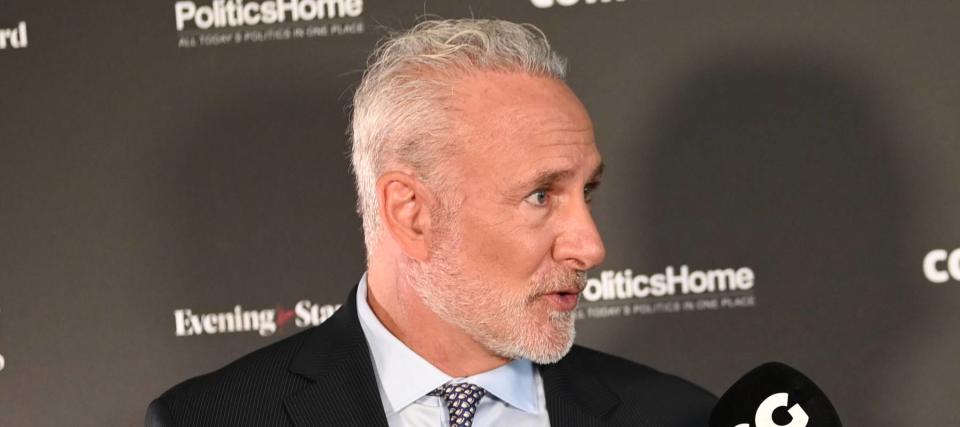Famed investor Peter Schiff said that married women in the workforce are partly to blame for the country's housing crisis — and he was blasted for it. Here's his explanation

Famed investor Peter Schiff landed in hot water after he listed “married women entering the workforce” as a cause of today’s housing crisis.
The finance commentator shared his controversial take in a post on X (formerly known as Twitter) in August — starting with an observation on mortgage rates: “The 30-year, fixed-rate mortgage peaked at 18.45% in Oct. 1981 and troughed at 2.65% in 2021. The current rate is 7.4% and rising.” (Since Schiff tweeted that, the average rate has fallen to 7.22%.)
Don’t miss
Commercial real estate has outperformed the S&P 500 over 25 years. Here's how to diversify your portfolio without the headache of being a landlord
Rich young Americans have lost confidence in the stock market — and are betting on these 3 assets instead. Get in now for strong long-term tailwinds
Save big on your holiday shopping with an app that’s already saved users $800 million
Schiff went on to write: “40 years of falling mortgage rates, plus married women entering the workforce, allowed home prices to rise much faster than incomes.”
This comment went down like a lead balloon with some X users, with one simply responding: “Of course it’s the women’s fault. Nice Peter.”
Another wrote: “You just insulted every woman who fought tooth and nail to break the glass ceiling, compete in the workplace, further civilization’s progressive certainty, I can't think of a single woman that's gonna roll with your 1947 take on the female workforce.”
Schiff responded, saying: “That's not what I meant.” Here’s what he says he actually meant by his words.
What did Schiff really mean?
Schiff set up his contentious post by pointing out that mortgage rates hit a record 18.45% in 1981. What caused that monumental number in the eighties?
Runaway inflation, he says.
The Federal Reserve hiked the federal funds rate to 21% in June 1981, in reaction to rising oil prices, government overspending and an uptick in wages. When inflation is high, the value of the dollar decreases and lenders typically charge a higher rate of interest to compensate. This means everything — including housing — is more expensive.
“Married women worked to help their husbands buy more expensive homes,” Schiff explained. “Women working didn't cause home prices to rise, but rising home prices caused women to get jobs. It was inflation that caused home prices to rise.”
A popular theory posits that extreme inflation in the late 1970s and early 1980s spurred more women to enter the workforce. New training and job development programs that were started under the 1973 Comprehensive Employment and Training Act, as well as favorable developments such as employer-sponsored day care and paid family leave, may also have contributed to this surge of working women.
“Married women entering the workforce’ wasn’t a cause of inflation, it was an effect of inflation,” one X user reacted in a reply to Schiff’s post. “It became a necessity in the 70s. Of course there were other reasons, but inflation was one of them.”
Schiff replied: “Correct, plus rising taxes. Taxes and inflation reduced real earning of married men. So their wives were forced to get jobs to make up for that loss.”
Read more: Thanks to Jeff Bezos, you can now use $100 to cash in on prime real estate — without the headache of being a landlord. Here's how
Soaring housing costs
One metric used to gauge housing affordability is the home-price-to-median-household-income ratio. At the beginning of the 1980s, the ratio stood at around 4.4, compared to 7.51 as of August 31, 2023.
That means the average single-family house in the U.S. today costs more than seven times the median annual household income.
So what’s causing the current affordability crisis?
Home prices surged during the pandemic, when record-low mortgage rates, accommodative monetary policy and new remote working trends caused the demand for homes to spike. At the same time, the supply of new housing dropped due to pandemic-related disruptions to supply chains and industry labor pools.
Now, mortgage rates are still at elevated levels and home prices are still high because there are so few homes for sale — meaning there’s more competition for the ones that are on the market. Experts worry the effect of both phenomenons may have "crushed" the housing market. Realtor.com recently predicted home prices will drop less than 2% in 2024 on average.
Beyond that, other costs liked home maintenance, home insurance and property taxes have also spiked — and Schiff thinks these trends will “likely accelerate over the next few years” until inflation and interest rates have cooled down.
What to read next
Worried about the economy? Here are the best shock-proof assets for your portfolio. (They’re all outside of the stock market.)
Here's how much the typical baby boomer has saved for retirement — how do you stack up right now?
'A natural way to diversify': Janet Yellen now says Americans should expect a decline in the USD as the world's reserve currency — 3 ways you can prepare
This article provides information only and should not be construed as advice. It is provided without warranty of any kind.

 Yahoo Finance
Yahoo Finance 